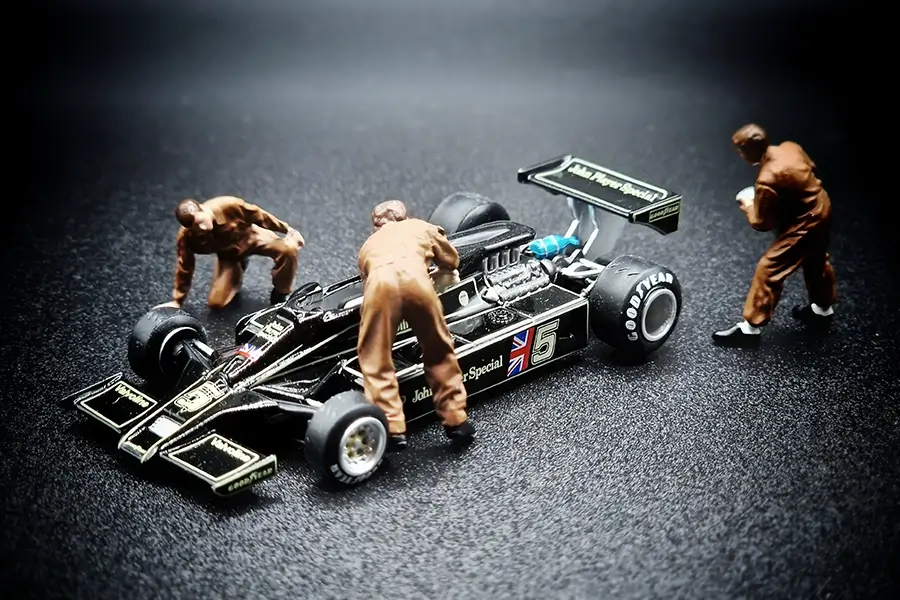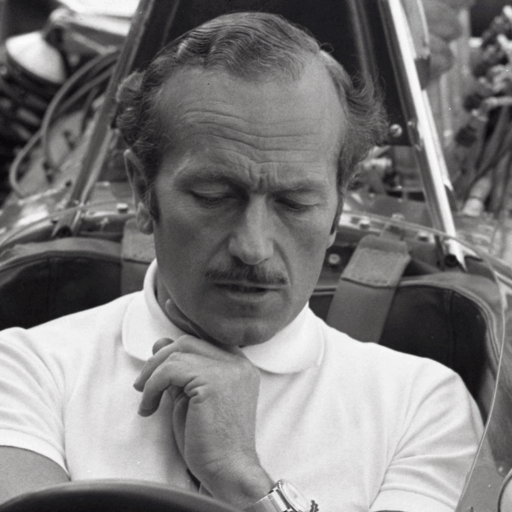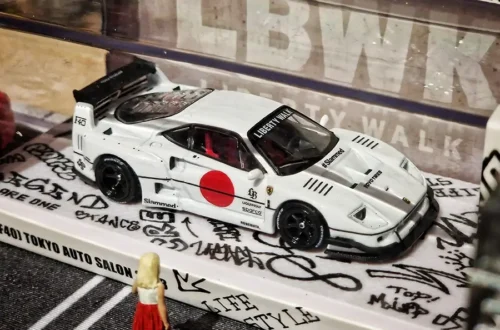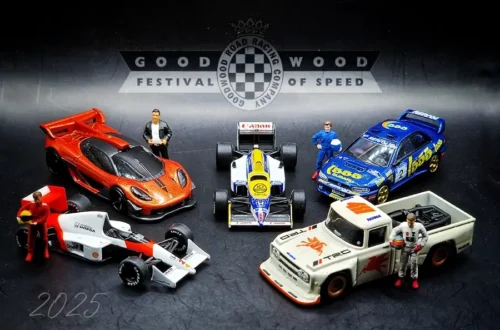
Groundbreaking F1 technology in red and gold?! – Lotus 78 MiniGT FEATURETTE
A revolutionary milestone in F1 history
The Lotus 78 was THE Formula 1 racing car built by the British racing team Lotus, which competed in the World Championship in 1977 and 1978. The Lotus 78 heralded a new era in the construction of single-seater racing cars. The car, whose basic design was defined by technical mastermind Colin Chapman, was the first true wing car in Formula 1 history and paved the way for many racing cars that were subsequently built based on this concept. Aerodynamicist Peter Wright used negative ground effect in the construction of the Lotus 78. This effect significantly increased the downforce of the vehicle on the track.
In addition, hard rubber strips were attached to the sides of the chassis, which rubbed against the track and sealed the space between the underbody of the vehicle and the track to further enhance the effect. This design gave the Lotus 78 three times more downforce with the same drag and the best speed in corners, fully legally. The Minigt model embodies the most important features on a scale of 1:64 like no other. The body was slim and had wide side panels for the radiators and fuel tank. Even the filler necks can be seen on the model. The proven Cosworth V8 engine was used to power the car, which can be seen on the Minigt model with the Ford logo and even hinted at wiring. The underbody of the model also showcases the typical shape of the ground effect construction.

Direct comparison with Kyosho
Some time ago, we were able to secure the legendary Kyosho 1/64 Lotus F1 Minicar Collection, which contains 24 vehicles. More precisely, there are 12 different models, each model comes twice with different start numbers and drivers. Included are Fittipaldi's Lotus 72E, as well as Lotus 78, 79, 81, 88, 91, 97T-99T (Ayrton Senna's Era) and other Lotus models from later years. This allows for a direct comparison with the Minigt Lotus 78. Today, depending on the Kyosho model, you can easily pay $25 or, with a bit of luck, secure the entire collection for around $350. Minigt has already announced that it will also release 1/64 scale models of Ayrton Senna's Lotus F1 cars.
Particularly striking: Minigt was able to print the JPS and John Player Special on the chassis. This came as a surprise to everyone, as it is now hardly possible or permissible to print cigarette advertising on the models. Spark, for example, supplies waterslide decals to be applied to their models with hot water by your own hands. Kyosho, on the other hand, was not allowed to print the same thing on any of the Lotus models and instead printed ‘Team Lotus Special’ on the chassis. Incidentally, both versions come without a driver and feature an empty cockpit. However, one red and gold Minigt model stands out in particular, but more on that later.

Racing history of the Lotus 78
The car made its debut at the Argentine Grand Prix with Mario Andretti (USA) and Gunnar Nilsson (SWE) at the wheel. Thanks to this technology, the Lotus 78 was by far the fastest car of the season. The aerodynamic design used a curved underside to create negative pressure that sucked the car onto the track, dramatically increasing cornering speeds in particular. Despite its success, the 78 was not perfect at all. The aerodynamic concept led to an unstable area further back on the vehicle, which is why a large rear wing was needed. A faulty gearbox and the unreliability of the Ford Cosworth engine led to retirements and possibly cost Andretti the 1977 world championship title. Nevertheless, Lotus won five races in 1977.
On only its fourth start, at the United States Grand Prix West, Andretti drove the 78 to victory. However, three more victories were not enough to prevent the consistent Niki Lauda from winning his second world championship title. In addition to victories in Spain and Italy, Andretti also won the race in France. Sweden's Nilsson won the Belgian Grand Prix, his first and only Grand Prix victory. Nilsson's compatriot Ronnie Peterson, who took over the cockpit for the new 1978 season, was killed in a Lotus 78 at Monza after a mass collision at the start. In the same year, Peterson had won the South African Grand Prix with the 78. The car was replaced during 1978 by the further developed Lotus 79, which continued the team's dominance until Andretti won the world championship in 1978.

Gunnar Nilsson's farewell in 1978 in red and gold
The latest model from Minigt shows a somewhat unusual Lotus F1 racing car. In 1977, the Lotus-Ford appeared in the typical John Player Special colours of black and gold, the signature colours of the tobacco company. But the last Grand Prix in Japan in 1977 was a bit different, because while Andretti's number 5 started in black and gold, Nilsson's Lotus 78 was repainted in Imperial red and gold. While special paint jobs are not uncommon in Formula 1 today, this move was a very interesting one by the tabaco company in 1977. As Imperial International was, as the name suggests, better known internationally, including in Japan, it was decided to compete in Japan under the Imperial brand beside JPS. JPS, John Player & Sons, usually referred to simply as Player's, was a tobacco and cigarette manufacturer based in Nottingham, England. In 1901, the company merged with twelve other companies and became a subsidiary of the Imperial Tobacco Company of Great Britain and Ireland. Thus, Nilsson drove a red Imperial Lotus 78 only for this particular Grand Prix. However, the race itself was not a worthy conclusion for Nilsson, as he had to retire from the race due to technical problems despite a good start. It was also his last race, as he died of cancer the following year mid 1978.

Our final words
Thanks to its historical context, this model brings even more emotion to the model, because that is what defines the Formula 1 models of yesteryear. The history of the drivers, teams, sponsors, companies and technical milestones is unparalleled. And that's why the Lotus 78 and the matching models are an absolute MUST for every racing and car enthusiast!



You May Also Like

Birth of a legend: Ayrton Senna karts enter Mini GT world
December 14, 2025
THE WORLD of WATARU KATO – LIBERTYWALK FEATURETTE
January 4, 2024
